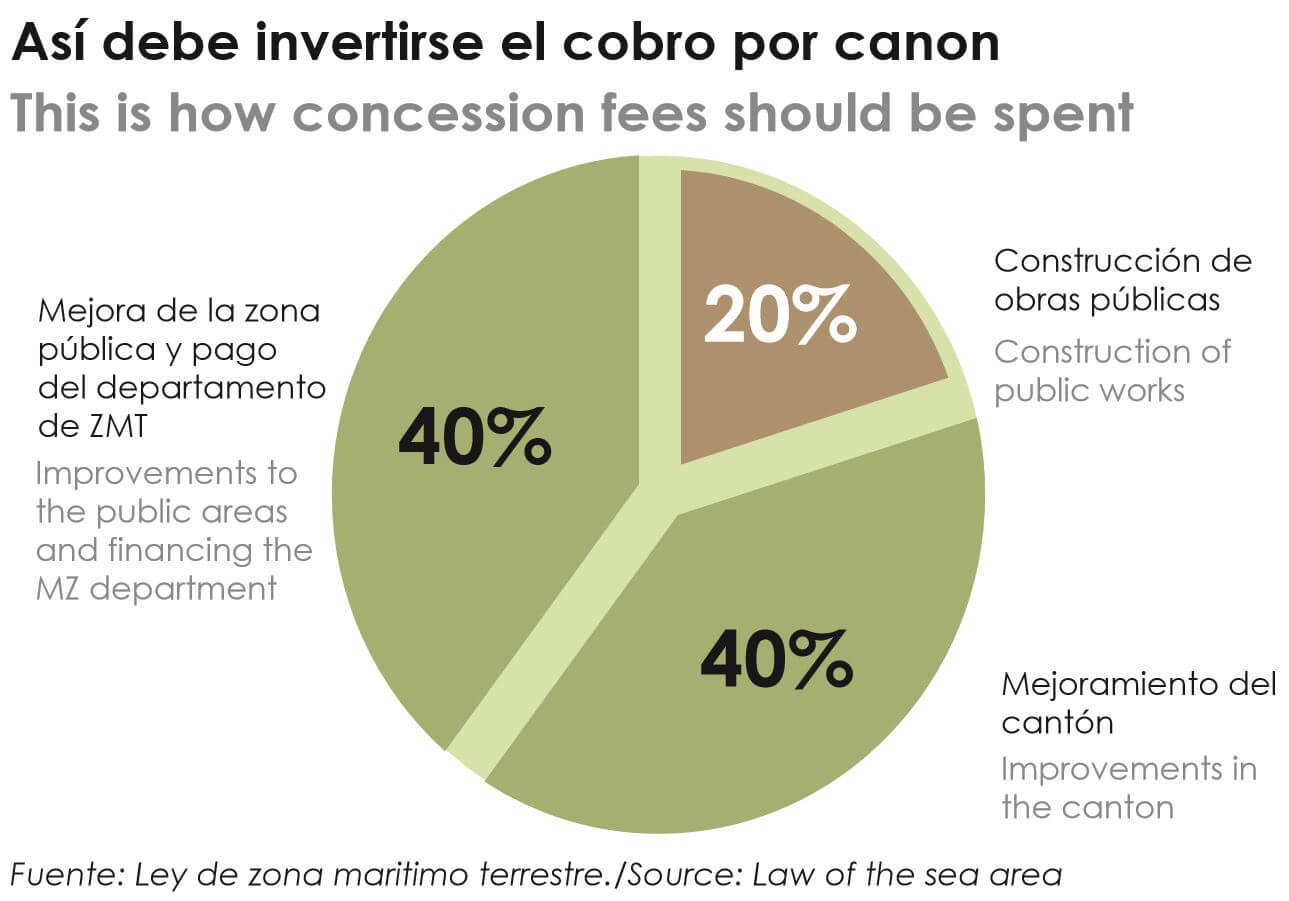A stack of files multiplies every month in the Maritime Zone (MZ) Department of the City Hall of Santa Cruz, where the new boss, Onías Contreras, tries in vain to attend to the thousands of sheets of paper with requests, expired concessions, unmade appraisals and other unfinished business.
“We don’t have a detailed, effective way to manage all of the information for each concession, so we obviously have a whole bunch of expired ones, or ones just about to expire,” says Contreras in his cramped, dark office.
The Voice of Guanacaste and the journalism program Punto y Aparte conducted a joint investigation to see how the City Hall of Santa Cruz uses the money that concession-holders pay to use the 200 meters of restricted land after the high-tide mark. This land is called the “maritime zone,” and belongs to the government – meaning all Guanacastecans.
We discovered that the money that should be used to improve the public areas of the coasts and to fund the department of inspections and appraisals (40% of the total) are not enough to even cover bureaucratic expenses, such as employees’ salaries which, last year, cost ¢85 million.

The investigation also showed that, over the last two decades, the City Hall failed to update property values every five years, which is stipulated in the Maritime Zone Law.
The only document that brings information together – although not all of it – about the 129 concession-holders in Santa Cruz’s MZ shows that 90% of the properties have not had their values updated in more than five years.
For example, a property in Brasilito, whose last appraisal was on March 3, 2000, pays ¢51,340 for the concession. Just taking inflation into account, this property should have paid ¢168,732 for the concession this past March. But, they still pay the same rate they did 17 years ago.
The document, of which The Voice of Guanacaste has a copy, does not show which concessions have expired nor what is the amount concession-holders should pay. And municipal employees don’t know, either.
Read also: Muni of Santa Cruz investigates employee for alleged mistreatment of residents of the maritime zone
An old, well-known problem
How did the City Hall get to this point? Up until last year, the head of the MZ department was José Alberto Padilla, who was fired this past January by the current mayor, María Rosa López, after she found that Padilla had allegedly neglected his duties, harmed residents and worked under the influence of alcohol.
The Voice of Guanacaste reported in 2015 that several council members and residents had complained about Padilla, who had not handed in technical reports for over a year. This delayed the awarding of concessions.
Read also: Santa Cruz’s MZ called out for delay in concessions
According to Leticia Gutiérrez, the head of the City Hall's tax administration department -and Padilla’s boss’- was distrusting of his department. “He wouldn’t let anyone into the department. He didn’t allow for interventions,” she, her boss, said of Padilla.
The Voice of Guanacaste tried to speak with the former municipal employee, but he did not answer any calls this newspaper made to his cell phone.
Municipal leaders cannot claim ignorance of this problem. In addition to the previous list, the Comptroller General’s Office (CGR) has warned of the department’s disorganization since 2004 and, although the City Hall complied with the orders in 2010, the situation remains similar to the one described in reports ten years ago.
What would happen if the money existed?
The City Hall’s financial problems are greater than just the lack of income from the MZ. However, it is the greatest opportunity for growth in the canton, say financial director Mario Moreira and planning director William Huertas.
“Santa Cruz has the most commercial coastline in the country. We could collect a lot more money,” says Moreira with a mixture of bitterness and resignation.
Law 6043 of the Maritime Zone states that monies received for concessions must be invested in the following way: 20% in public works; 40% in improvements in the canton; and 40% in improving the public areas (with the ICT’s permission) and paying the MZ department.
For example, in 2016 the City Hall was able to collect ¢160 million. Of that, 40% (¢67 million) should have been spent on both the department and the public areas. However, this did not happen; just keeping the office open cost ¢85 million.
What now?
Leticia Gutiérrez believes that the next step is to take the database, head into the field, and go property by property to update values and confirm that the information in each file is correct.
Are two Municipal workers enough to inspect 129 properties? “We have to work with what we have,” said Gutiérrez.
Mayor María Rosa López said that she hired a third employee to transcribe the information in the files. This information will be fed into new software that will allow for greater control over management of the concessions.
Although López did not include strengthening concession management as part of her plan for governing the canton, she had to solve situations that have, for years, harmed the canton’s income and improvements. Now, in a small office, three people are charged with solving the world of Santa Cruz’s concessions.





















